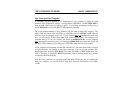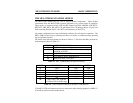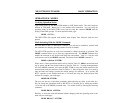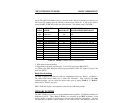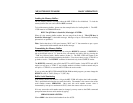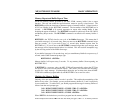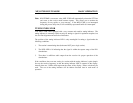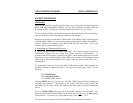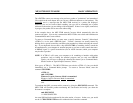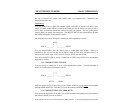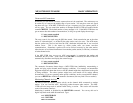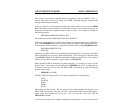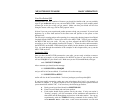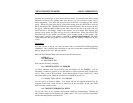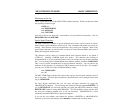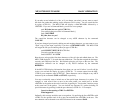
MFJ-1278B MULTI-MODE BASIC OPERATION
The <ENTER> causes your message to be put into a packet, or "packetized," and transmitted.
(We explain in the next chapter how you can use a different character to send packets.) The
underlined text is a message that the MFJ-1278B received in a packet and displayed.
Whenever you are in Converse Mode anything you type will be assembled into a packet
addressed to the station you are talking to and transmitted. If there is not a QSO (connection)
in progress, the packet will be sent to the address CQ.
In the example above, the MFJ-1278B entered Converse Mode automatically after the
connect took place. You can also command the MFJ-1278B to move back and forth between
Command Mode and Converse Mode.
To return to Command Mode, you must enter a special character, Control-C (abbreviated
<CTRL-C>), or else send a BREAK signal. "Control" characters are usually entered by
holding down a special control key and then typing another key without releasing the control
key. If your keyboard does not have a key marked CTRL or something similar, consult the
documentation for your computer or terminal program to see how to enter control characters.
A BREAK signal is a special transmission (not an ASCII character) which your computer
may be able to produce.
NOTE: If <CTRL-C> will cause your computer to do something to interfere with packet
operations, such as halting the terminal program, and you can't send BREAK
signals, you will have to change the character that returns you to Command Mode.
See the section on "Special Input Characters," below.
Now type a <CTRL-C>. The MFJ-1278B does not echo the <CTRL- C>, but you should
immediately see a Command Mode prompt. To return to Converse Mode, enter the
command CONVERS:
<CTRL-C>
cmd: CONVERS
Whatever I type in Converse Mode is transmitted.
Whatever I type in Converse Mode is transmitted.
<CTRL-C>
cmd:
To terminate the QSO, you must end the connect by giving the DISCONNE command. The
MFJ-1278B will transmit packets terminating the conversation and notify you when the
disconnect is complete:
cmd: DISCONNE
*** DISCONNECTED
An actual QSO might be terminated by the other station, of course. In that case, you would
see the
*** DISCONNECTED
message without having issued the command.



